We at AlgaeBarn love clean-up crew critters and microorganisms, so welcome to the ultimate housekeeping celebration! At AlgaeBarn, we are highlighting our ultimate housekeeping teams because they deserve recognition for keeping our reef tanks spotless. This week, we are going to discuss some of our favorite natural methods for keeping a clean system. It’s also a great time to talk about the advantages of choosing captive-bred clean-up crew (CUC) critters.
Reefkeepers have been attempting to mimic the ocean’s food webs since the beginning of the hobby. It would be next to impossible to duplicate the dietary composition of the coral reef. However, we’ve gotten very close to replicating the nutritional profiles of these ecosystems. Although there is one caveat (and it is a big one); if we did replicate these food sources and all their bioavailability, it would pollute our systems in a matter of hours.
This is one of the reasons why AlgaeBarn is committed to making it easier and more affordable to properly feed reef tanks! We have focused efforts on formulating live phyto feeding systems. These microorganisms are more than just food, they’re a super crucial component of the CUC cache.
Reef tanks can be challenging to keep clean with just truly “natural” methods. It’s partly due to their complexity. Reef keepers still need to maintain a delicate balance between underfeeding and overfeeding to the point of pollution. The elimination of waste products is one of our biggest priorities in the reef tank system.
Utilizing minimally processed or, even better, live foods, might be our only real option without creating massive amounts of waste. Natural food that has been preserved well typically produces less waste and is very nourishing. They’re also widely accepted by a variety of organisms. However, live foods are the most appealing because they are 100% nutritionally intact. And perhaps most importantly, feeding live foods can cut down on waste build up in the reef tank.
This holds true for waste products that are both dissolved and particulate. Live food organisms which are mostly plankton, help to regulate nutrient levels. This in turn helps to slow the growth of many types of nuisance algae. And perhaps the best part is that some of these microorganisms even eat algae!
So which products are pulling double duty?
AlgaeBarn can stock a reef tank with the entire base of the marine food pyramid. So, there are a few different products that we feel have revolutionized both reef tank nutrition and filtration. Here are just a few of the most complete and dynamic live foods that AlgaeBarn has put together:
Our select copepod blends, EcoPods and GalaxyPods.
A suspension feed called PNS YelloSno imitates marine snow.
Live phototrophic bacterioplankton called PNS ProBio.
OceanMagik, a live phytoplankton blend of four species.
EcoPods and GalaxyPods
Just about every natural marine ecosystem has copepods. Entire food webs would collapse without these little critters! Pods help move food energy from lower to higher levels of the food chain. They feed on particulate organic matter (POM), protozoans, and microalgae. The pods are then eaten by larger animals like fish, inverts, and corals.
A strong CUC team consists of a diverse range of herbivores and detritivores. Snails and hermit crabs are good choices for larger CUC critters that fit these categories. However, there are also smaller scavengers like pods that fit the bill. Tiny pods feast on both invasive algae and debris. Pods help to prevent accumulations of nuisance algae before they get out of hand.
PNS ProBio & YelloSno
Many animals on the coral reef rely on suspended particulate organic matter (POM). Filter-feeders like clams and feather duster worms depend on a steady supply of POM. Hard and soft corals, as well as anemones, are other inverts that take nutrition from POM. Many filter-feeders have even adapted to capture POM.
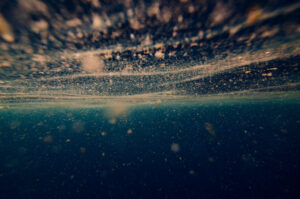 POM can consist of debris like small pieces of exoskeletons from dead phyto and pods. Additionally, POM has been fortified because of microbes that colonize them. Due to this bacterial coat, the particles stick together. The particles grow in number as they stick together and start to fall out of suspension. The term “marine snow” refers to the enriched clumps of POM that sink through the water column.
POM can consist of debris like small pieces of exoskeletons from dead phyto and pods. Additionally, POM has been fortified because of microbes that colonize them. Due to this bacterial coat, the particles stick together. The particles grow in number as they stick together and start to fall out of suspension. The term “marine snow” refers to the enriched clumps of POM that sink through the water column.
PNS YelloSno is designed to imitate marine snow. This product is made up of a natural chitinous matter like POM, and it is colonized by live bacteria. The particle size of YelloSno is varied which is exceptional for a liquid product. The particle sizes range from tiny microbial cells to larger clumps. But what is even more unique is that the particle size can be customized to suit any reef tank system.
Depending on the needs of the reef tank, YelloSno can be shaken more vigorously to break up the larger clumps. Filter-feeders will ingest PNS YelloSno it while it is still suspended in the water column. Pods, sand-sifters, and other ultimate housekeeping critters devour the particles once they settle down onto the substrate.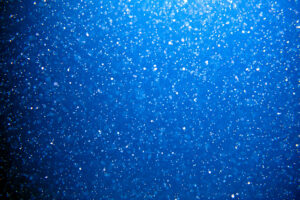
But this is just where things get started! More efforts have been spent in understanding the most intricate workings of microbial food webs. Studies on the use of purple non-sulfur bacteria (PNSB) in aquaculture have shown fascinating results! Since the industry has started supplementing PNSB in reef tanks, the results have been amazing.
PNSB have been shown to break down compounds like ammonia, nitrite, nitrate, and phosphate. This microbe also digests organic wastes like detritus in both aerobic and anaerobic regions of the coral reef ecosystem. The PNSB species most likely to have the largest distribution is Rhodopseudomonas palustris. The microbe, R. palustris, can be found almost everywhere! R. palustris can colonize swampy soils, the surfaces of plants and algae, and even the guts of inverts. These rod-shaped microbes are abundant throughout the world!
R. palustris can populate a range of microhabitats in reef tanks. To perform photosynthesis, this microbe moves away from oxygen and toward light. However, this strain also roams around looking for a source of organic carbon. PNSB love the space just below the top layer of the sand bed or the surface layers of live rock. This ecosystem of the reef receives a minimal amount of light.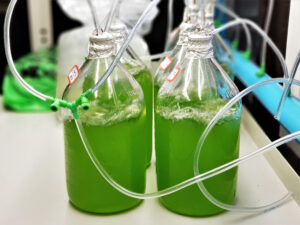
Perhaps the heaviest hitting member of our micro-CUC is OceanMagik! Reef tank cleanup is a home run between OceanMagik and PNS ProBio. Before being eaten, the live phyto in OceanMagic break down ammonia, nitrate, and phosphate in the water. While the PNSB of the ProBio eat waste compounds for a source of carbon, they also absorb organic wastes.
The addition of ProBio serves to fortify the carotenoid profile in OceanMagic. As a result, coral and inverts will show improved coloration and health. Additionally, this pair provides the system with antioxidants. It has also been shown that the PNSB microbes in YelloSno & ProBio can also inhibit the growth of dangerous bacterial strains like Vibrio.
Ultimate housekeeping on the reef
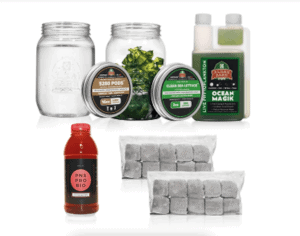 Reef tanks will undoubtedly thrive with regular dosing of high-quality live phyto like OceanMagik. Live phyto helps to maintain clean reef tank substrates and offers a natural live food. PNSB enriches any sediments that are still present, which helps to move vitamins and carotenoids higher up the food chain. Remember, making waste products into a meal is the best way to eliminate them!
Reef tanks will undoubtedly thrive with regular dosing of high-quality live phyto like OceanMagik. Live phyto helps to maintain clean reef tank substrates and offers a natural live food. PNSB enriches any sediments that are still present, which helps to move vitamins and carotenoids higher up the food chain. Remember, making waste products into a meal is the best way to eliminate them!
As an aside, we should mention one of our favorite ultimate housekeeping feeding hacks. Be sure to include a side of NanoBrine with your next AlgaeBarn order for a full-fledged reef feeding frenzy. Before adding the NanoBrine, gut load them by soaking them for about an hour in a gallon of aerated tank water infused with PNS ProBio and OceanMagic.
Additionally, you can even go ahead and add PNS ProBio to all prepared foods by soaking or saturating them for a few minutes before feeding. CUCs support a cleaner, healthier reef tank system by assisting in the control of dissolved nutrient levels and invasive algae growth. Be sure to check back this week as we continue to shine the spotlight on some of AlgaeBarn’s favorite CUC critters!

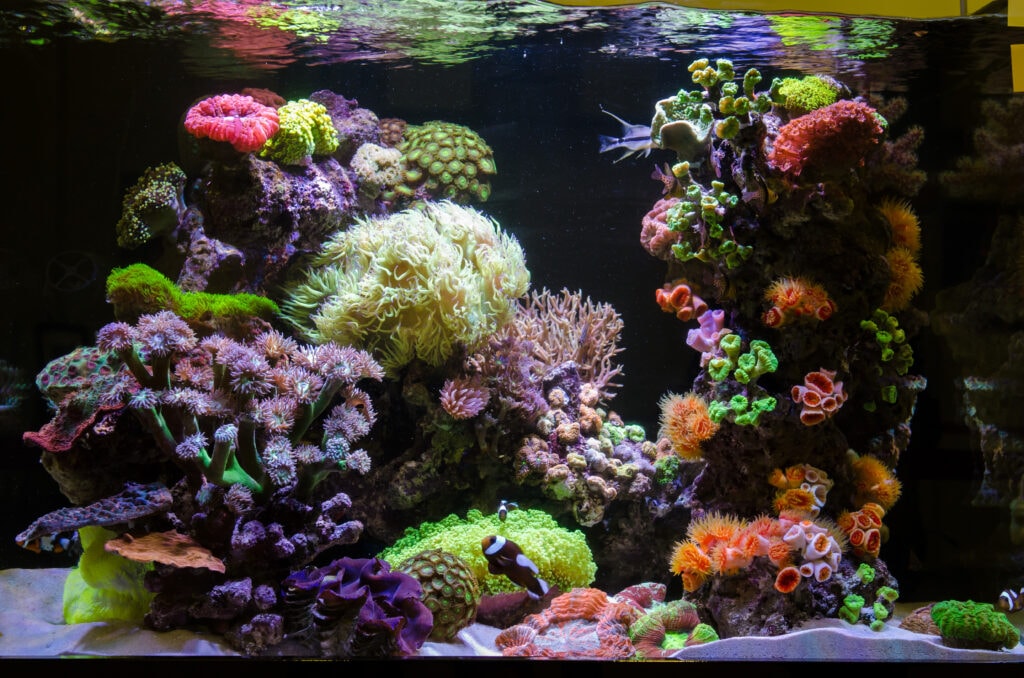
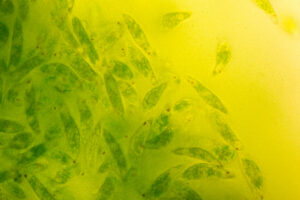
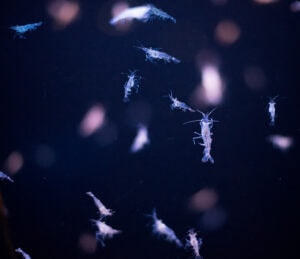
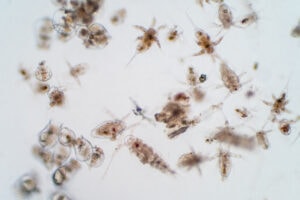




Bruce Matthews says
Hello,
Do you ship to Canada?
Best regards,
Bruce
Samantha Obergas says
Hello Bruce, at this time we are unable to ship to Canada. We will add your email to the list of people who would like to be notified when we are able to ship internationally again!
Matthew Bruce says
Do you ship to Dubai?
Regards
Matthew
Samantha Obergas says
Hi there,
At this time we do not ship internationally.